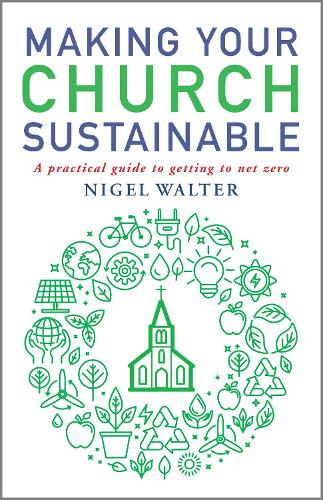In 2020 General Synod voted for the whole of the Church of England to achieve net zero carbon by 2030 and this was followed in 2022 by the Routemap, the plan by which that net zero carbon target would be reached. That Routemap breaks down the journey to net zero carbon into milestones to be completed year by year.
The Church of England has prepared full details of how your church can use the Routemap to reduce its carbon emissions, and a comprehensive set of guidance notes on the ‘Net Zero Carbon Church’.
Getting to Net Zero
The Church of England is running a series of webinars designed to support and equip you to reach the Church’s ambitious “net zero carbon” emissions target. Topics include choosing the best heating solution for your church, what to consider when replacing your heating or lighting system, simple steps to reduce energy bills, management of church lighting and solar PV panels. See the Church of England’s website for full details of future topics, dates and how to book, and to view past webinars.
Recommended reading:
‘Making Your Church Sustainable: A Practical Guide to Getting to Net Zero‘ by Nigel Walter. Canterbury Press, Norwich, 2024 (paperback £14.99) ISBN 978-I-78622-497-2

Energy Footprint Tool (EFT)
The Energy Footprint Tool is part of the Church of England online Parish Returns System. Clergy and Church Treasurers complete this each year with information about the energy use of the church, using the church’s electricity and gas/oil bills. The tool calculates your churches’ carbon emissions from energy use and gives a carbon emissions (CO2) rating.
Quinquennial Inspections
The CBC has prepared a best practice note on QI Reports and Sustainability and Net Zero Carbon.
Solar Photovoltaic (PV) Panels
Solar photovoltaic panels on Churches are the subject of much national discussion at the moment, and we hope the following advice might be useful for parishes thinking about this issue for their churches, buildings subject to faculty jurisdiction and for other buildings belonging to the church.
Firstly, please see the Church of England’s guidance on Solar Panels.
The CBC guidance, issued in August 2021, says that faculty permission is needed in every case; however, from 1st July 2022 the installation of photovoltaic panels on a church which is not a listed building or in a conservation area has been brought within the scope of List B – item B1(20).
The CBC supports the use of solar panels on churches but note that:
- It will take account of the carbon payback time when it considers proposals for solar PV. This means that the solar PV should save more in carbon during its warranted lifetime that the carbon produced to manufacture and install it.
- it will not normally support ground mounted solar panels as the panels and associated cables are attractive for theft; in some graveyards ground mounted panels could be too visually dominant.
Historic England have updated their guidance very recently (25th March 2024) and have a section on their website – Installing Solar Panels. HE’s guidance is important as local authority planning departments often refer to it.
Fire and Flood – Protecting Your Church
Protecting your church from wildfire:
With average temperatures increasing year on year the incidences of wildfires affecting communities are likely to increase. The Church of England has issued guidance on how to balance keeping areas of long grass in a churchyard to encourage biodiversity whilst also ensuring that such areas do not provide fuel for the fire.
Creating a flood resilient church building:
At the other end of the spectrum, climate change is causing more and more sudden and catastrophic flooding. You can read the Church of England’s guidance on creating a flood resilient church building.
Historic and Traditional Buildings at Risk of Flooding
New Historic England Guidance (published October 2025) – One in four buildings are at risk of flooding, and this figure is likely to increase as further effects of climate change are felt. The links in this new guidance lead to HE’s technical advice and guidance on understanding how the historic environment might mitigate or adapt to flooding to ensure its resilience. It also includes information on energy efficiency, insurance and repair and drying.
ECO Church
For details of A Rocha’s ECO Church award scheme.